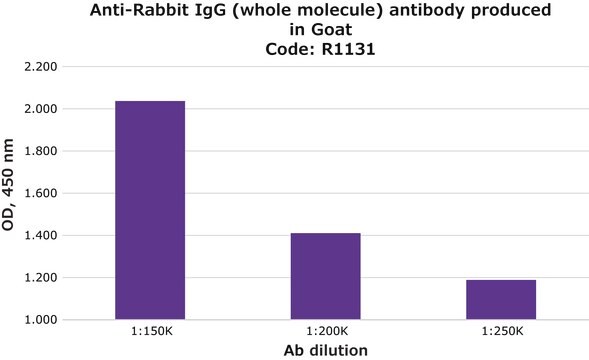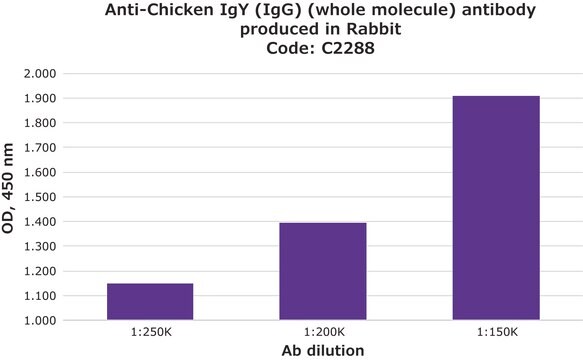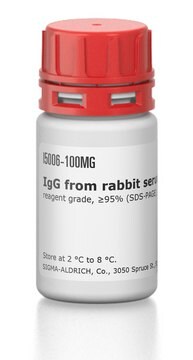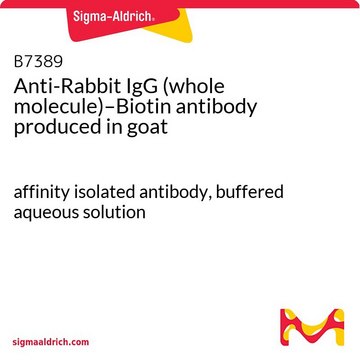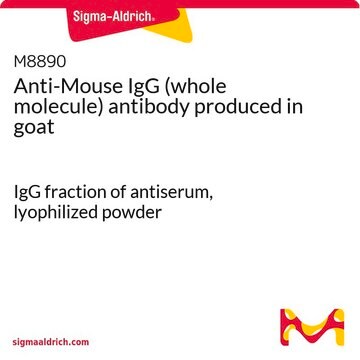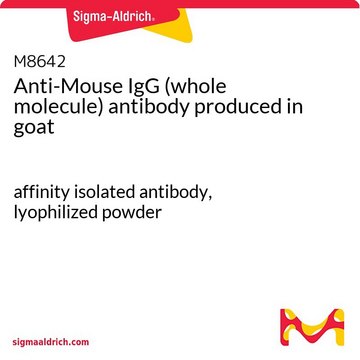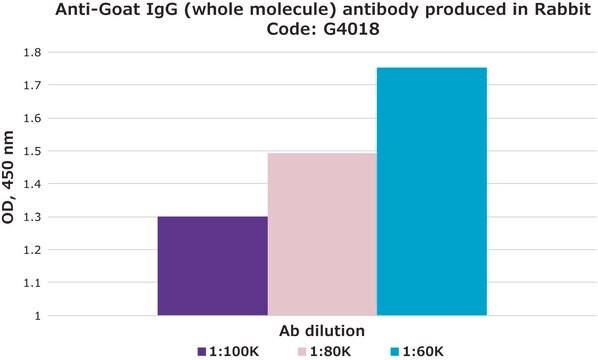General description
Immunoglobulins (Igs) belong to the immunoglobulin super-family and have two heavy (H) and two light (L) chains, held together by disulfide linkages. The heavy chain has one variable N-terminal region and three to four constant (CH1-CH4) C-terminal regions. The L chain comprises of one variable N-terminal region and a constant C-terminal region. IgG is an abundant protein in human serum. The four classes of IgG include IgG1, IgG2, IgG3 and IgG4. The IgG heavy chain region is mapped to human chromosome 14.
Rabbit immunoglobulins (IgGs) are often used as primary antibodies in several protein assays. Thus, anti-rabbit IgGs can be used as secondary antibodies to study and characterize target proteins bound to rabbit IgGs. Anti-Rabbit IgG (whole molecule) antibody is specific for IgGs in rabbits.
Specificity
Anti-Rabbit IgG (whole molecule) antibody is specific for IgGs in rabbits.
Application
Anti-Rabbit IgG (whole molecule) antibody is suitable for use in quantitative precipitin assay, immunoelectrophoresis, immunohistochemistry , and laser scattering microscopy .
Anti-Rabbit IgG (whole molecule) antibody produced in goat has been used as secondary antibody in vivo xenograft assay in non-small-cell lung cancer (NSCLC) tissues and in western blotting detection in endometrial sample from cattle.
Biochem/physiol Actions
Digestion of IgG by papain results in the generation of fragment antigen binding (Fab). Pepsin digestion of IgG produces fragment crystallizable (Fc). The Fc region of IgG antibody has enormous therapeutic potential and is exploited for the development of therapeutic antibodies. IgG1 class is the most abundant and its deficiency results in hypogammaglobulinemia. IgG2 deficiency increases susceptibility to bacterial infections. IgG3 mediates effector functions, and IgG4 is associated with asymptomatic infection.
Physical form
Solution in 0.01 M phosphate buffered saline pH 7.4, containing 15 mM sodium azide as preservative
Storage and Stability
For continuous use, store at 2-8 °C for up to one month. For extended storage, the solution may be frozen in working aliquots. Repeated freezing and thawing, or storage in "frost-free" freezers is not recommended. If slight turbidity occurs upon prolonged storage, clarify the solution by centrifugation before use.
Disclaimer
Unless otherwise stated in our catalog or other company documentation accompanying the product(s), our products are intended for research use only and are not to be used for any other purpose, which includes but is not limited to, unauthorized commercial uses, in vitro diagnostic uses, ex vivo or in vivo therapeutic uses or any type of consumption or application to humans or animals.


